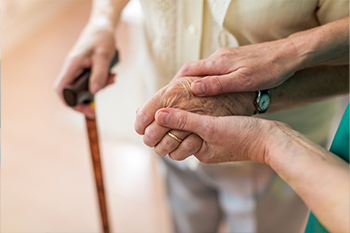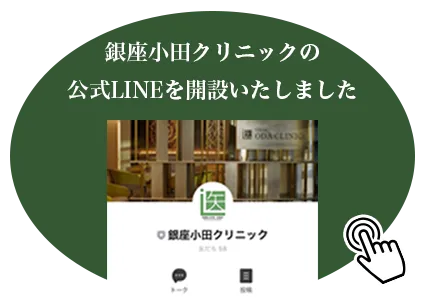Approved for provision of Class II Regenerative Medicine, and completion of Cell Processing Facility Notification
Regenerative Medicine using stem cells is subject to rigorous inspection by a specific and specialized committee approved by the Ministry of Health, Labor, and Welfare (MHLW) of Japan, which examines the appropriateness, safety, medical care infrastructure, and cell processing management system.
If the treatment is deemed appropriate, the therapeutic plan would be submitted to the MHLW, and the treatment allowed to be performed for the first time.
Oda Clinic is a medical facility that has gone through the formal process of submitting to Class II Regenerative Medicine Provision Plan to the Ministry of Health, Labor, and Welfare (MHLW) of Japan, obtaining the approval, and the registration number.
1.What is a stem cell?
Our body consists of about 60 trillion cells, and each of the individual cells has a different role. Some cells make up organs such as skin and the heart and make the organs function, and other original cells can transform (differentiate) into cells that have such functions. These latter cells are called “stem cells” and can self-renew to allow our body to stay young.
Our cells have their own unique life span, and many cells die after differentiation. To compensate for this, stem cells are to expand through self-renewal and to differentiate into new tissues.
In recent years, studies on the medical application of these characteristics of stem cells have been actively undertaken, with several institutions actually using stem cells for treatment. The use of the self-renewal potential of stem cells enables exponential expansion of small quantities of cells collected from tissues such as fat, bone marrow, and teeth. The transplantation of the resulting stem cells in sites affected by disease or injury is expected to result in the regeneration of transplantation sites.
There are three major categories of stem cells used for research on regenerative medicine:
[Induced pluripotent stem cells (iPS cells)]

iPS cells are the stem cells that were successfully established by the group led by Professor Yamanaka in 2006 for the first time in the world and have the ability to differentiate into various tissues and organs as well as the ability to multiply almost infinitely. These cells can be obtained by transferring specific genes into somatic cells to turn cells back to their pre-differentiation state. The medical application of iPS cells is expected to provide regenerative medicine, in which cells lost due to disease or injury are generated and transplanted. At the same time, some genes transferred for the generation of iPS cells have a known potential to induce cancer cells, which are shown to be associated with the risk of malignant transformation in the living body.
[Embryonic stem cells (ES cells)]
The human body is made from hundreds and hundreds of cells, which can go back to a single fertilized egg. ES cells are cells extracted from a blastocyte, the first stage of a fertilized egg, and have the ability to differentiate into various tissues and to multiply almost infinitely, as with iPS cells. As ES cells have similar abilities to those of iPS cells and pose no risk of malignant transformation, as observed in iPS cells, they have potential for medical application. However, at the same time, the use of fertilized eggs raises ethical issues which remain to be solved.
[Mesenchymal stem cells (MSCs)]
Mesenchymal stem cells are the stem cells that can be extracted from tissues such as fat, bone marrow, and teeth, and transformed to fat, bone, nerves, and other tissues. Unlike iPS cells and ES cells, these cells have been differentiated to some extent, and the destination of their differentiation is limited. On the other hand, MSCs have been demonstrated to be highly safe and have already been applied to medicine in various ways both in Japan and overseas.
Possible Side Effects / Complications
Since we use autologous stem cells (the patient’s own cells) for the therapy, the risk of side effects is considered low. It’s unfortunate that there have been serious medical accidents due to intravenous non-autologous stem cells administration at other medical institutions in the past.
2.Treatment of atopic dermatitis using mesenchymal stem cells derived from autologous adipose tissues
atopic dermatitis

Atopic dermatitis is a skin disease that causes recurrent inflammation over a long period of time caused by an excessive reaction of the skin’s barrier function. Currently, there is no cure for the disease itself, and the ultimate goal of the prevailing treatment is to suppress symptoms and maintain a condition that does not interfere with daily life. Therefore, general treatments include skin care to improve skin condition, drug therapy using topical steroids and tacrolimus ointment, and prescription of antihistamines for itching.
Treatment at our hospital
Regenerative medicine provided at our clinic involves extracting stem cells from the patient’s adipose tissue, expanding them via culturing, and injecting the cells into the patient’s veins. Growth factors produced by mesenchymal stem cells can relieve inflammation or regulate immunity, and these effects can potentially reduce excessive immunity in atopic dermatitis and calm inflammation to restore normal skin barrier function.
Commonly used treatment
Atopic dermatitis is a skin disease with chronic recurrent inflammation, which develops secondary to an exaggerated reaction of skin barrier function. Currently, there is no established approach to treatment to completely heal the disease itself, and the ultimate therapeutic goal is reducing symptoms and maintaining a condition that does not interfere with daily life. Thus, commonly used treatments include the improvement of skin care, drug therapy with topical steroids or tacrolimus ointment, and the prescription of antihistamines for itching.
Expected benefits / possible adverse reactions
Expected benefits
Relief of inflammation caused by atopic dermatitis and the improvement of associated symptoms are expected.
Possible adverse reactions / complications
As autologous cells are used, the risk of adverse reactions is considered to be low.
In contrast, serious medical accidents have previously occurred due to intravenous administration of stem cells at other institutions.
3.Treatment of knee osteoarthritis using mesenchymal stem cells derived from autologous adipose tissue
knee osteoarthritis

Osteoarthritis is a chronic disease that occurs when cartilage in joints wears away or ligaments and tendons are chronically damaged due to aging or injury. It is a chronic, painful condition. In the early stages of the disease, the pain is mild, but as it progresses over time, the symptoms become severe enough to interfere with daily life. Common treatments include prescriptions for pain relievers, joint injections of hyaluronic acid and other drugs to alleviate pain, and physical therapy. As an example, in the case of the knee, if the progression of the disease cannot be halted by these methods, artificial joint replacement surgery, in which the knee joint itself is replaced with an artificial joint, is considered.
Treatment at our hospital
Regenerative medicine provided at our clinic involves extracting stem cells from the patient’s adipose tissue, expanding stem cells via culturing, and transplanting the cells in the patient’s knee joint. Differentiation of mesenchymal stem cells transplanted in the knee joint is expected to promote the regeneration of knee cartilage and also relieve knee pain through the anti-inflammatory properties of stem cells.
Expected benefits / possible adverse reactions
Expected benefits
Improvement, suppression of progress, and remission of acute exacerbation in knee osteoarthritis are expected.
Possible adverse reactions / complications
As autologous cells are used, the risk of adverse reactions is considered to be low.
In contrast, serious medical accidents have previously occurred due to intravenous administration of stem cells at other institutions.
4.Treatment of Dementia
Dementia
Dementia is a condition in which a person is unable to carry out daily and social life due to chronic decline or loss of various mental functions that have developed normally since birth.
The cause of dementia is still unknown in many cases, and the prevalence of dementia in 65 to 69 year olds is about 1.5%, but it doubles every 5 years thereafter, reaching 27% in 85 year olds 1).
In recent years, attention has also been focused on early-onset dementia, which is defined as juvenile dementia that develops between the ages of 18 and 44, and presenile dementia that develops between 45 and 64. An epidemiological survey on juvenile dementia conducted from 2006 to 2008 in five prefectures and two cities in Japan estimated that the number of patients with juvenile dementia nationwide was approximately 37,800.
(Excerpt from “Dementia” on the Ministry of Health, Labor and Welfare website)

In the regenerative medicine we provide, stem cells are isolated from the patient’s fat tissue, increased in number through culture, and returned to the body through intravenous infusion.
This allows the cells to travel throughout the body through blood vessels and stay where they are needed for repair, secreting necessary intracellular factors to repair the tissue.
Expected effect
It is expected to improve cognitive symptoms and suppress progression.
4.Flow of therapy
Flow of therapy
①As adipose tissues from the patient are used for treatment, the patient’s adipose tissues are harvested after local anesthesia of the abdomen.
②Mesenchymal stem cells are extracted from the adipose tissue and cultured at our clinic’s cell processing center. (About one month)
③Quality control testing will confirm that quality and safety are acceptable.
④The patient will be asked to return to the clinic to receive intravenous administration of stem cells in our clinic’s drip room.
contact to email



